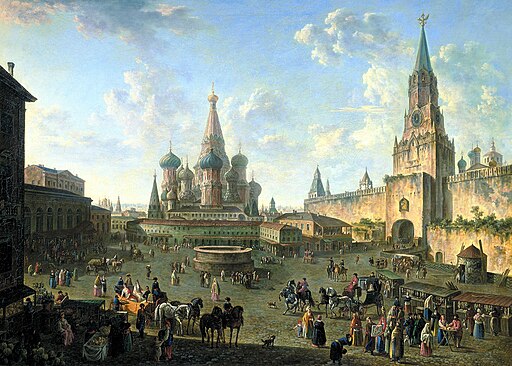“Portrait of Père Tanguy” by Vincent van Gogh depicts the paint grinder who sold art supplies and was an art dealer. He was one of the first to offer Van Gogh’s paintings for sale.
Père Tanguy’s cheerful demeanor and enthusiasm for art and artists made his shop one of the most favored art supply shops in Paris, and he was nicknamed Père (“Father”) Tanguy.
This brightly colored painting represents a shift in Vincent’s attitude and style. Van Gogh called his use of bright colors, “his gymnastics,” as he experimented with creating great depth and harmony in his artwork.
The background is covered with Van Gogh’s favorite Japanese prints that were sold at Tanguy’s shop. Gogh’s favorite Japanese prints included images of Mount Fuji, Kabuki actors, and cherry trees in bloom.
During Van Gogh’s stay in Paris between 1886 and 1887, he tried to master a new, lighter palette. This “Portrait of Père Tanguy” shows his success with the brighter palette and is evidence of an evolving artistic style.
Van Gogh painted Tanguy with a calm, contemplative nature. This portrait is the last of his three paintings of Julien Tanguy.

Van Gogh’s first “Portrait of Père Tanguy” – Paris, January 1887 – Ny Carlsberg Glyptotek
The first “Portrait of Père Tanguy” by Vincent van Gogh in January 1887 is somber and formed from a simple composition.
The second of Van Gogh’s “Portrait of Père Tanguy” created in Paris during the Winter of1887/88 introduces van Gogh’s Japanese prints and his use of brighter colors, as he experimented with his style.

Van Gogh’s second “Portrait of Père Tanguy” – Paris, Winter 1887/88
The three portraits demonstrate the evolution and progression in van Gogh’s artistic style after he arrives in Paris.
Van Gogh’s last “Portrait of Père Tanguy” shows his progress to a more advanced style. The color integrates Japanese, Impressionist, and other influences on the Parisian artist community.
The last portrait conveys a sense of the serenity that van Gogh sought for himself.
Julien Tanguy
Tanguy was a supportive father figure who shared his food and money with artists and showed their paintings with enthusiasm.
Tanguy accepted paintings as payment for paints, which made his arts shop in Montmartre, full of Impressionist paintings, like “visiting a museum.”
Van Gogh met many artists at Julien “Père” Tanguy’s paint shop, including Émile Bernard and Henri de Toulouse-Lautrec, who became his friends.
After Van Gogh’s death, his funeral was attended by Julien Tanguy, who was among the twenty family members and friends at service.
Van Gogh died in 1890 and Tanguy four years after.
When Tanguy died, his friends from his artistic circle, staged an auction for his widow.
Following Tanguy’s death, his daughter sold the Portrait of Père Tanguy to sculptor Auguste Rodin. The last Portrait of Père Tanguy is now in the permanent collection at Musée Rodin in Paris.
Portrait of Père Tanguy (Father Tanguy)
- Title: Portrait of Père Tanguy (Father Tanguy)
- Deutsch: Bildnis Père Tanguy
- Artist: Vincent van Gogh
- Nationality: Dutch
- Year: 1887
- Medium: Oil on canvas
- Dimensions Height: 92 cm (36.2 in); Width: 75 cm (29.5 in)
- Movement: post-Impressionist
- Museum: Musée Rodin
Vincent van Gogh
Vincent Willem van Gogh is among the most famous and influential figures in the history of Western art. Van Gogh was unsuccessful during his lifetime and was considered a madman and a failure.
He created about 2,100 artworks, including around 860 oil paintings, most of them in the last two years of his life.
They were characterized by bold colors and dramatic, impulsive, and expressive brushwork that contributed to the foundations of modern art.
Vincent van Gogh
- Name: Vincent Willem van Gogh
- Born: 1853 – Zundert, Netherlands
- Died: 1890 (aged 37) – Auvers-Sur-Oise, France
- Resting place: Cimetière d’Auvers-Sur-Oise, Auvers-Sur-Oise, France
- Nationality: Dutch
- Movement: Post-Impressionism
- Notable works:
- Starry Night
- Starry Night Over the Rhône
- Sunflowers
- Irises (Getty Museum)
- Self Portrait, dedicated to Paul Gauguin
- Portrait of the Postman Joseph Roulin
- White House at Night
- The Night Café
- Self-Portrait as a Painter
- Self Portrait with Felt Hat
- Green Wheat Field with Cypress
- The Raising of Lazarus
- Self-Portrait Mutilated Ear
- Café Terrace at Night
- Tarascon Stagecoach
- Wheatfield with Crows
- Bedroom in Arles
- Portrait of the Artist’s Mother
- Vase with Red Poppies
- Memory of the Garden at Etten
- Great Peacock Moth
- Farmhouse in Provence
- Agostina Segatori Sitting in the Café du Tambourin
- Fishing Boats on the Beach at Saintes-Maries
- Seascape at Saintes-Maries
- Girl in White
- Young Peasant Woman with Straw Hat Sitting in the Wheat
- Van Gogh’s Chair
- Gauguin’s Chair
- Saint-Rémy – Road with Cypress and Star
- Almond Blossoms
- The Church at Auvers
- The Yellow House
- Portrait of Père Tanguy
Van Gogh and Pére Tanguy
A Virtual Tour of the Musée Rodin, Paris
- The Kiss by Auguste Rodin
- Eve by Auguste Rodin
- The Mature Age by Camille Claudel
- “The Burghers of Calais” by Auguste Rodin
- “Portrait of Père Tanguy” by Vincent van Gogh
The Many Pictures Loving Vincent Paints
~~~
“The best way to know God is to love many things.”
– Vincent van Gogh
~~~
Photo Credit: 1) Vincent van Gogh [Public domain], via Wikimedia Commons; Wapakk / CC BY-SA (creativecommons.org/licenses/by-sa/4.0); Héric SAMSON / CC BY-SA (creativecommons.org/licenses/by-sa/3.0)
Popular this Week








 Sponsor your Favorite Page
Sponsor your Favorite Page SEARCH Search for: Search Follow UsJoin – The JOM Membership Program
Sponsor a Masterpiece with YOUR NAME CHOICE for $5
Share this:
- Tweet

